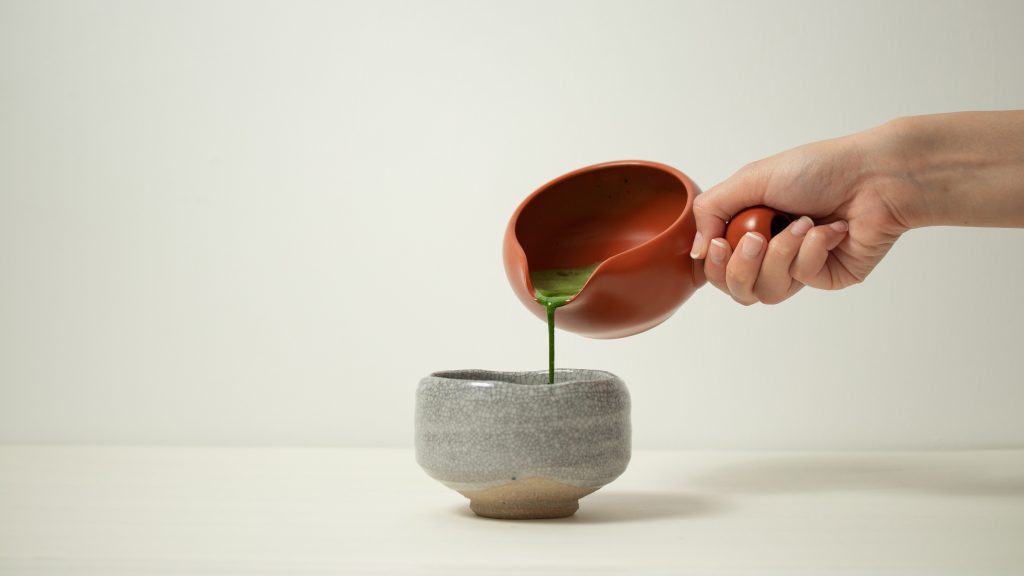
Our guide on how to make matcha tea
WHAT IS MATCHA TEA?
What we mean by “matcha tea” is simply a category of matcha drinks made with matcha and water only. So this means that within the category of “matcha tea”, there would be many types of matcha drinks, including:
Traditional matcha tea
- Usucha
- Koicha
Non-traditional matcha tea
- Cold brew matcha
- Matcha shot
- Matcha tea, Naoki Matcha style

Even then, we should not be too concerned about adhering to these newer forms. Tweak the water and matcha ratios to make something you personally enjoy! If you like milder matcha tea, use less matcha powder or more water. If you like stronger tasting matcha tea, use more matcha powder or less water. If you use good quality matcha powder, there is no wrong way to make matcha tea. “What is matcha tea” should not matter much at all.
IS THERE A PROPER WAY TO MAKE MATCHA TEA?
The short answer is no. However, there is a “proper way” to make a usucha and koicha because these are part of Japan’s ancient tea heritage and culture. To be respectful of this culture, you should try to follow the standard recipes if you want to make usucha or koicha.

However, there is no proper way to prepare matcha tea, generally.
If you have never tried Japanese tea, you may find traditional usucha and koicha much too concentrated to be enjoyable. Instead of starting out with usucha and koicha, why not try other forms of matcha tea that still taste good and can give you a better experience?

DO YOU NEED TO LEARN THE TRADITIONAL TEA CEREMONY TO ENJOY MATCHA?
No you do not. Not everyone will enjoy traditional forms of matcha tea and that is fine. If you like traditional forms of matcha tea, it is also not required to prepare it in accordance with the tea ceremony procedures. Feel free to enjoy matcha in various different ways.

For the average consumer, a bright green powder placed alongside the traditional Japanese tea ceremony tools can look quite foreign. If you are new to matcha, please do not worry about the “proper” way to make matcha.
The “proper” way of preparing matcha requires months and years of dedicated study
- The tea ceremony, or chanoyu, is a formal Japanese ceremony that is an important cultural tradition.
- It is a formal event with it’s own set of correct tools, manners and attire.
- The tea ceremony may appear simple and straightforward if you’re watching one being performed on YouTube videos.
- However, many steps are full of cultural significance with prescribed tools and procedures to follow.
- Many Japanese will tell you that they have no idea about the extent of these rituals, and no Japanese tea master would expect a foreigner to follow or even understand this traditional way of preparing and enjoying matcha.
- If you are genuinely interested in the art of the Japanese tea ceremony and are willing to invest the time and energy to learn it, go for it. If not, just try any of our recipes and see if matcha works for you.
Personally, we enjoy matcha as a tea beverage, but we recognise that it may not be everyone’s immediate preference. It really takes time to build up the palate to appreciate different blends of matcha.
HOW TO PREPARE MATCHA THE TRADITIONAL WAY (USUCHA OR KOICHA)
Usucha

Usucha is the more common way of drinking matcha in Japan. However, there are norms related to the proportion of water and matcha in preparing usucha which may still make usucha too strong for some. It tastes good when made with good quality matcha, but may not be appropriate for everyone. If you have not tried matcha before, we would recommend you start with our alternative methods ofmatcha tea or cold brew.
Koicha

Koicha is usually reserved for consumption during Japanese tea ceremonies. Because it is made with less water, it is very thick and this lets the guest savor all of the delicate notes in the mattcha. Because it’s so thick, you should only make koicha with top quality matcha. Anything less may be quite bitter. If you’re new to matcha, we highly recommend that koicha be avoided until you accumulate more experience and learn to really appreciate the nuanced flavors in top quality matcha powder.
OTHER WAYS TO MAKE MATCHA TEA
Cold Brew

Last summer, we had lots of fun preparing matcha cold brew. When made with the correct blends, matcha cold brew is extremely delicious and provides a good energy boost too. Best of all, it’s really simply to make.
If you need more detailed instructions, please visit the detailed recipe page here.
Matcha Americano

Our version of matcha tea recipe is very easily enjoyable for people who have never experienced matcha or Japanese tea. In terms of flavor, you can expect a milder, refreshing taste as compared to the traditional usucha tea.
For more detailed instructions, visit the recipe page here.
HOW DOES THIS AFFECT YOU?
Having read the above, you will understand:
- There is no proper way of preparing matcha tea, only proper ways of making specific forms of traditional matcha tea, namely usucha and koicha.
- “What is matcha tea” should not be limited to just usucha and koicha.
- Matcha tea is really a wider category of different matcha drinks made with matcha and water
- We have recipes for other types of matcha tea that taste good and are easily enjoyable.
- You do not need to learn the tea ceremony or understand it in order to make and enjoy matcha.
- Usucha and koicha may not be appropriate for beginners, so try starting out with these other types of matcha tea.
Instead, focus on how to make matcha tea taste good. How matcha tastes is greatly affected by the way it is prepared. It is very helpful to have some guidance along the way.

That means starting with simple, milder recipes such as cold brew, our version of matcha tea, and of course, matcha lattes. Our recipes exist simply to help you make matcha tea taste good.
